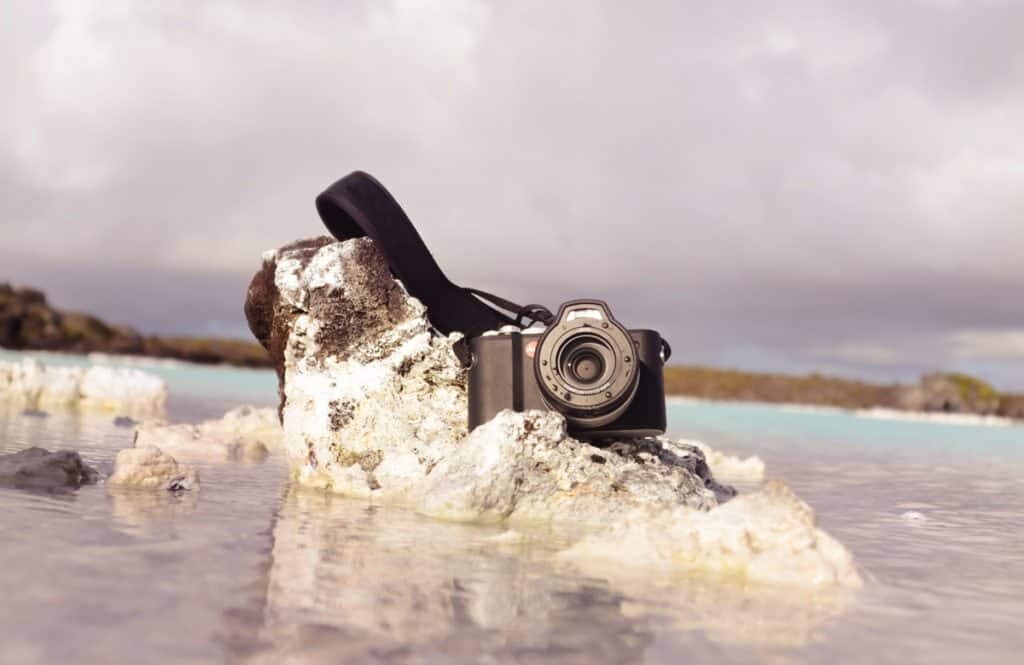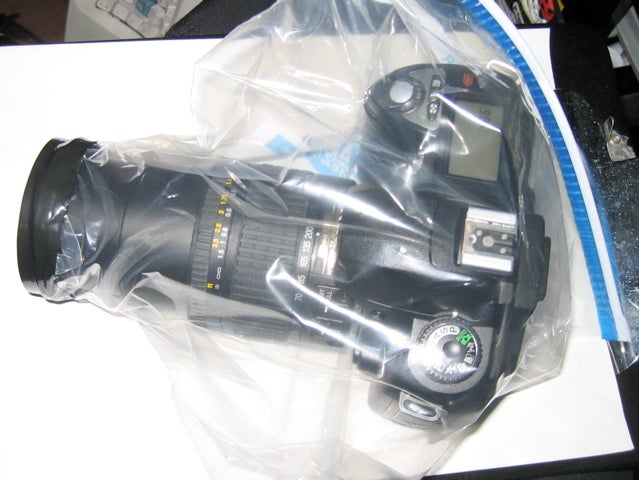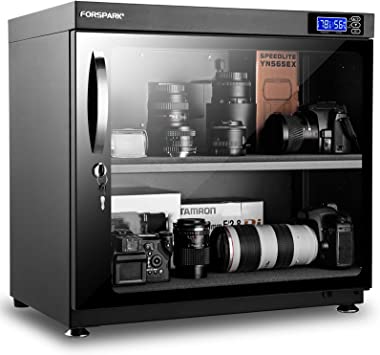If you’ve ever found yourself in an environment where the sand and salt from the sea has gotten into your camera, you know how damaging it can be. Saltwater and seawater particles can corrode and eat away camera parts, so it’s important to protect your camera from these elements. A dehumidifier can help reduce this problem, but you’ll also want to avoid using sand to clean your camera.
Table of Contents
Waterproofing your camera
One way to avoid getting your camera gear dirty while on vacation is to waterproof it. Waterproofing can be done in several ways. First, turn off the power on your camera. Water, especially salt water, can damage electronics. By turning off the power, you reduce the chance of damaging your camera. Then, clean the camera and housing with silica gel. If the water is still in the housing, you should use another waterproofing method, such as placing silica gel inside.

Another solution is a rain cover for your camera. These covers are useful in a variety of situations, from mud to snow to the beach. They prevent sand from getting on the camera and protect it from stray water sprays. You can buy rain covers at your local electronics store and cover your camera with one. They are also inexpensive and easy to pack. However, if you don’t have time to buy rain covers, you can buy one for your camera.
A camera housing is the best option if you frequently photograph the beach. This waterproof housing is not the cheapest option but it is the best solution. It not only waterproofs your camera gear, but also prevents fine grit and dust from getting inside. But while underwater housings are not very user-friendly on land, they do provide some unique opportunities. Besides, the added protection from salt and sand will help you take some unique photos that would otherwise be impossible.
In addition to waterproofing your camera gear from sand and moisture, you should also keep it from being exposed to extreme heat and cold. The moisture from rain causes gear to become more basic and acidic, causing problems with the electronics inside. This could lead to damage to the computer or mechanical parts of your gear. A dehumidifier can prevent moisture from entering your gear. The best solution to protect your gear is to purchase a housing made specifically for it.
Buying a camera that is “tough” can protect your expensive system. Waterproof housings can be as expensive as the camera itself. And if you’re going to be dipping your camera in water, consider a smaller camera instead. It will save you from the hassle of buying new equipment each time you want to go underwater. It can also protect your camera against accidental drops. And in case it falls, a waterproof camera can withstand a few feet of water without the need for additional accessories.
Using a plastic zip-top bag

When you travel, you may find yourself in a place with a lot of sand and dirt. While a camera bag may keep the sand out of your lens and camera, it limits your camera’s functionality. Sand is particularly hard to get out of the touchscreen LCD and control panel. If you’re planning to photograph in a sandy location, professional housing is the best solution.
While rain is essentially pure water, it reacts with various gases in the atmosphere to become alkaline, basic, or acidic. In time, the rain can strip the protective outer coating of your camera and lenses. The water can also reach the inside of your camera’s circuitry, compromising the integrity of the camera. Even though professional gear is designed to withstand harsh weather conditions, consumer gear often lacks these features.
Besides keeping your camera safe from sand, a plastic zip-top bag also protects your gear from moisture. Especially in cold weather, moisture can cause serious problems, as it can cause mold and corrode the electronics. So, before you head out on your trip, use a plastic zip-top bag to protect your camera gear from sand.
When you’re going on a photo shoot, be sure to take care of your camera. It’s crucial to protect it from sand and dust when you’re on the go. Even the most durable camera will break if it’s not protected. Therefore, make sure to carry a backup camera with you. Don’t leave your camera in the sand and never set it in it. If you don’t want to risk it, bring a cell phone camera or an inexpensive model.
Using a dehumidifier
Sand is the enemy of cameras, and even if you don’t intend to use your camera for shooting, it will still find its way onto your equipment. While you can avoid sand from getting inside your gear by storing it in a dry box over the beach, you should still keep it in a waterproof gear bag or tent if you are going on a vacation. To clean the lens, tripod joints, polarizer filters, ball heads, and filter threads in fresh water. In addition, you can also use a blower brush to remove sand grains from your lens.

While taking photos in a dry area, you should keep your gear in an air-conditioned room or a dehumidifier. Dehumidification affects camera gear the same way it affects human skin. Humans need at least 20 percent humidity to stay comfortable. Cold, dry air can crack skin. Low humidity can also rob your gear of lubricants and cause static electricity when you touch your gear.
To keep your camera gear clean, you should always wash your hands after playing in the sand. Sand and dirt can cling to the buttons and gears in your camera, which could lead to expensive repairs. Also, you should avoid leaving sunscreen or bug spray on your camera gear. Besides protecting your camera gear from sand and moisture, you should also keep it away from sunlight, bug spray, and a dehumidifier.
Taking your camera gear to the beach can also be a risky proposition. Sand can scratch camera surfaces, and sand can even damage the lenses and focusing gear units. These cameras require expensive repairs. If you plan on taking your camera equipment to a beach, take it with you in a waterproof, dehumidifier-equipped vehicle. If you’re not comfortable doing so, a dehumidifier will help.
To protect your camera gear from dust, you should also keep it clean and dry. A dehumidifier will help prevent these damages by absorbing moisture from the air. It will also protect your camera’s interior electronics from rust and corrosion. The most reliable dehumidifiers will have visual indicators and warning lights for you to know when to recharge them. You can also purchase an extended protection plan from camera retailers. These plans cover different repair services and levels of coverage.
Avoiding sand in cleaning
To avoid sand from entering the camera body and lenses, you need to protect your equipment with filters or a polarizing lens. Also, do not set your camera on the ground when cleaning it. Sand can be blown into the camera or accidentally kicked on the ground. Changing lenses also can cause sand to enter the body of the camera and cause damage. A lens cap should be reinserted after use to prevent further damage.
If you find that your tripod has been submerged in salt water, it is important to clean the locks and legs. Try to twist the locks to loosen any sand that may be stuck inside. The crunchiness that you hear or feel while rotating the legs and locks will indicate sand that has gotten into your gear. If your camera or lens has been exposed to sand and you are unsure of what to do, you can use a hair tie to protect it from further damage. Make sure to carry a microfiber cloth in your camera bag.
When cleaning your camera, do not change lenses in the open air. While zoom lenses and backup camera bodies with other lenses are helpful, never remove the lenses before you leave your vehicle. Sand can enter the camera body and ruin the most important electronic parts. Sand also can make cleaning your camera more difficult and costly, so make sure you plan for the sand-free beach before you head out. A little bit of caution will go a long way when cleaning your camera gear.
If you can’t avoid sand in your camera bag, consider leaving your camera at home. If you do take your camera along with you to the beach, make sure to seal it in a plastic bag. If possible, bring a cell phone camera with you to avoid the sand and salt residue. And when you do, make sure to wipe down your camera immediately. Otherwise, you could end up with a picture that is not what you expected.

